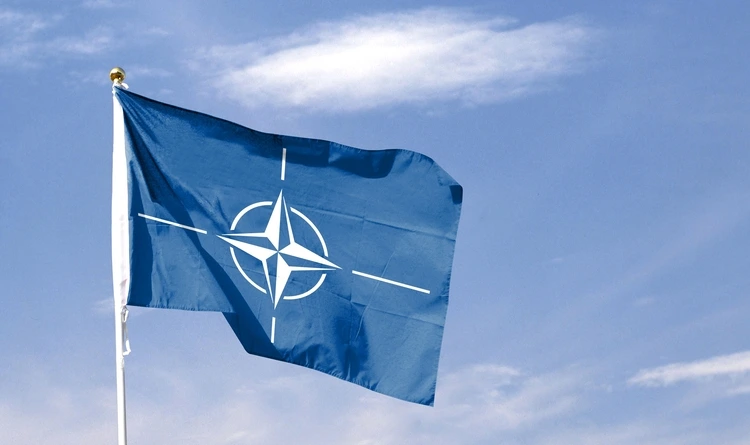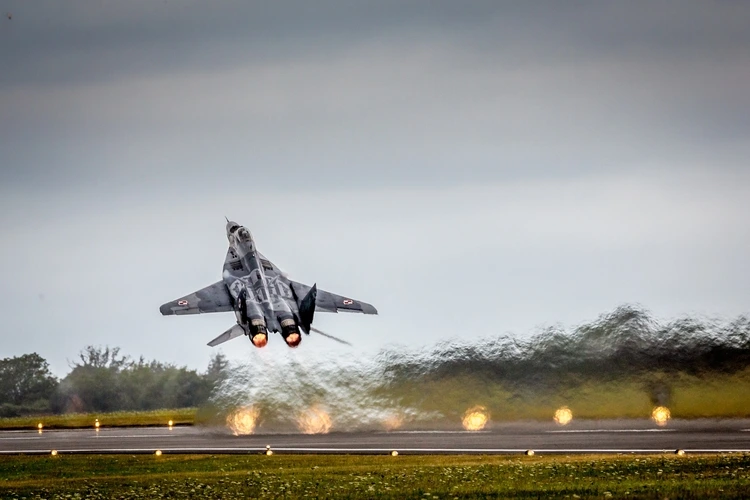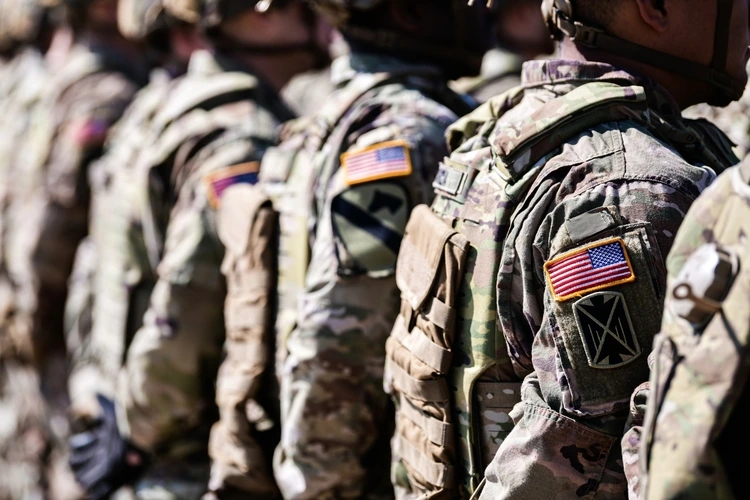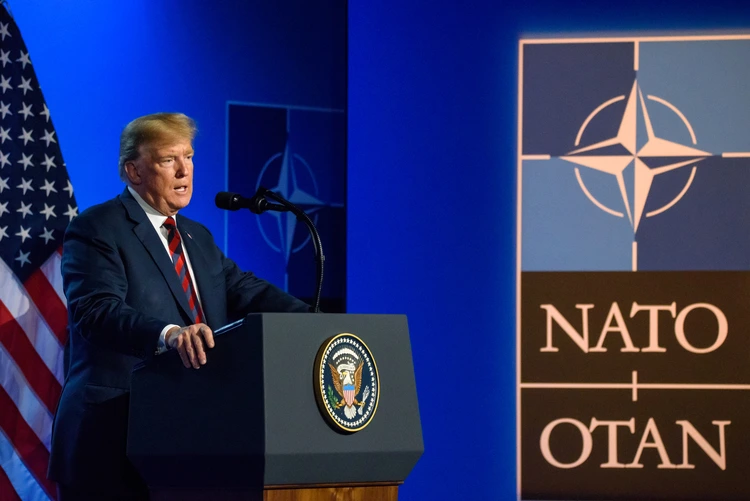
Discover exactly how NATO spending works and what member nations are spending their budgets on
By
By 2035, following pressure from the US, NATO members – comprising 32 countries – have pledged to spend five per cent of their total GDP on defence and security.
Previously, NATO’s target for nations was just two per cent of their GDP, a benchmark first implemented back in 2006. However, nine countries were unable to hit this target in 2024. Despite this, every NATO member has agreed to the new goal, excluding Spain, whose Prime Minister Pedro Sánchez called the former two per cent aim both ‘sufficient’ and ‘realistic’.
While this increase initially sparked tensions between countries, against the backdrop of continued conflict around the world – including the ongoing Russia-Ukraine war – it has perhaps never been more imperative for the organisation to remain intact.
Enjoying this article? Check out our related reads:
The five per cent target is split into two spending categories: 3.5 per cent dedicated to military investments, such as troops and weaponry, while the remaining 1.5 per cent is for defence, including cybersecurity and intelligence.

Although the move to increase budgets may have appeased Trump and secured the future of a stable NATO for now, it remains unclear how nations will tangibly boost their spending. Options include tax increases, issuing debt or cutting public spending on welfare and social programmes, all of which may face fierce opposition.
So, how have nations been spending their budget up until now? Here we dive into the details of NATO expenditures – both before and after the new five per cent target – ranking countries in reverse order according to the proportion of their GDP currently spent on defence.
United Kingdom – 2.3 per cent
Spending 2.3 per cent of its GDP on defence measures, the UK’s defence expenditure sits slightly higher than the European average of two per cent. This money has been used to bolster the Trident Programme – the country’s at-sea nuclear deterrent –as well as upgrading the British Army’s tanks. Additionally, the UK is utilising funding to strengthen its cyber defence, along with inroads being made into space-based surveillance.
In light of the new five per cent target, the UK has announced several planned investments including expanding its nuclear submarine fleet (from nine to twelve submarines), constructing at least six new munitions factories and acquiring fleets of fighter jets able to carry nuclear bombs.
Lithuania – 3.1 per cent
Lithuania also spends a significant proportion of its GDP on defence – 3.1 per cent – with money used to purchased tanks from Germany in a $950 million deal. The country has also acquired four Black Hawk helicopters to aid in air defence, as well as dedicating around €392.5 million to the maintenance and operations of their armed forces.
Following the announcement of the new target, Lithuania also plan to strengthen their operational capabilities, enabling them to swiftly open a national military unit.
Estonia – 3.4 per cent
The next largest defence spender in NATO is Estonia, at 3.4 per cent of its total GDP. Last year, almost 25 per cent of its defence budget –equivalent to €1.6 billion – was allocated to the purchase of long-range ammunition.The nation has also utilised money for armoured vehicles and artillery, as well as border fortifications along its eastern border with Russia. Additionally, by 2026, Estonia plans to build 600 bunkers along the Russian border, along with a new military base known as Camp Reedo.
In the coming years, the nation will also invest more in cybersecurity measures alongside operations to protect its critical infrastructure.
United States – 3.4 per cent
In 2024, the US allocated around 3.4 per cent of its total GDP to defence spending. However, in absolute terms, the US spends the most on defence: two-thirds of the NATO total. The nation continues to support measures in a variety of countries, from deploying air defence systems to Slovakia; sending F-15s from the UK to Poland; increasing missile destroyers in Spain to supporting efforts in Ukraine with fighter squadrons, aircraft and increased cyber capabilities.

More than 100,000 US troops are also deployed across Europe – with Germany hosting the largest number of forces in Europe, followed by Italy and the UK. Japan takes the top spot out of anywhere in the world for the largest deployment of US troops, standing at 50,000.
Additionally, the US significantly invests in cybersecurity, including operations such as the United States Cyber Command (CYBERCOM), a project involved in defending nations against potential cyber threats.
Future plans include allocating $33.7 billion to procure Navy ships; $1.8 billion to acquiring aircraft and a further $148.3 billion in research and development of advanced technologies such as AI, hypersonic weapons and quantum computing.
Poland – 4.1 per cent
Back in 2024, Poland spent the highest percentage of its GDP on defence: 4.1 per cent. This money was allocated to a range of projects, from a $2.5 billion agreement with the US on missile launchers; contracts to secure 96 attack helicopters and a $2.3 billion project to construct surveillance systems and barriers on Poland’s border between Belarus and Russia.
As the target for spending increases, Poland will continue modernising their military capabilities through purchasing more advanced weaponry. In the next three years, the nation also plans to increase its artillery shell production five-fold – from 30,000 to between 150,000 and 180,000 – with the aim of reducing reliance on foreign supplies.
How does it work?
In short, NATO is supported via direct and indirect contributions from its members. Essentially, direct contributions are funds pooled together by the 32 member countries, covering the alliance’s central budgets as a whole.
In total, the cost to run NATO and its programmes comes in at a sizeable $4.1 billion. This figure includes costs ranging from the operations NATO HQ, to the finances required to complete major infrastructure projects like airfields, communication networks and command and control systems. There is an agreed cost-sharing formula – based on national income – applied to all nations to calculate how much they must contribute.

The major direct contributors are the US and Germany (both supplying 16 per cent of the finances required to fund NATO), along with the UK (11 per cent). Additionally, other contributors include France (11 per cent), Italy (8 per cent), Canada (6.9 per cent) and Spain (5.9 per cent).
Prior to 2019, the US was paying 22 per cent of these costs, an agreement altered after the previous Trump administration dubbed other nations ‘delinquents’ for not providing more financial support to NATO.
As well as these, there are indirect contributions to NATO: defence spending that individual members allocate to bolster their national military forces. It is these indirect contributions that faced an increase following Trump’s demands.




